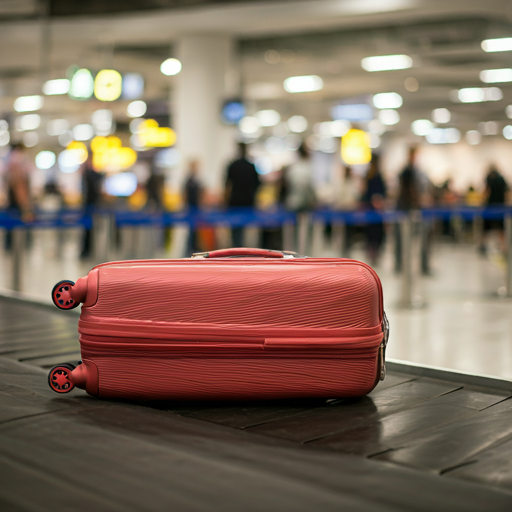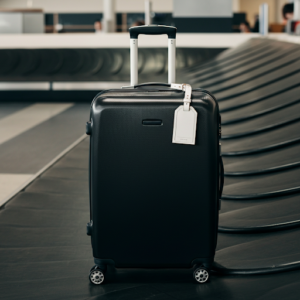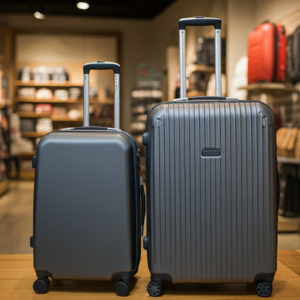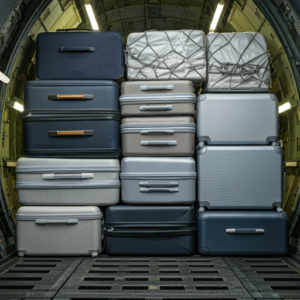Choosing the right carry-on luggage is more than just a matter of convenience. It’s a decision that can make or break your travel experience, especially when you consider the varying carry-on size restrictions and carry on baggage guidelines set by different airlines, such as the carry on luggage size for Frontier Airlines. Understanding carry on baggage fees is also crucial, as these fees can vary significantly across major U.S. airlines and impact your overall travel cost. When traveling, one of the most frustrating challenges is dealing with luggage that doesn’t meet these restrictions, leading to delays, extra fees, or even a missed flight. Carry-on luggage plays a crucial role in your travel comfort, ensuring that all your essentials are within arm’s reach, but it’s the size of your carry-on that can either enhance or hinder your journey.
Table of Contents
Airlines enforce strict rules about the size and weight of carry-ons, not only to ensure that there’s enough overhead bin space but also to maintain safety and operational efficiency. By understanding these limits, you can avoid the headaches that come with oversized or overweight bags. In this article, we’ll explore the optimal carry-on sizes, how to measure your luggage, and offer tips to help you navigate the ever-changing landscape of airline regulations.
Understanding Airline Baggage Policies
Navigating the maze of airline baggage policies can be daunting, but it’s a crucial step to ensure a smooth travel experience. Each airline has its own set of rules regarding carry-on and checked baggage, including size and weight limits, as well as fees for exceeding these limits. For instance, some airlines might allow a carry-on bag for free but charge for checked baggage, while others might have stricter weight limits for carry-ons.
Before you pack, take a moment to review the baggage policy of the airline you’re flying with. This information is usually available on the airline’s website or mobile app. Look for details on carry-on and checked baggage fees, size and weight limits, and any restrictions on specific items. Knowing these details in advance can help you pack accordingly and avoid any surprises at the airport. For example, understanding the carry on luggage size for frontier airlines can save you from unexpected fees and ensure your bag fits in the overhead bin.
By familiarizing yourself with these policies, you can make informed decisions about your luggage, avoid extra costs, and enjoy a hassle-free journey.
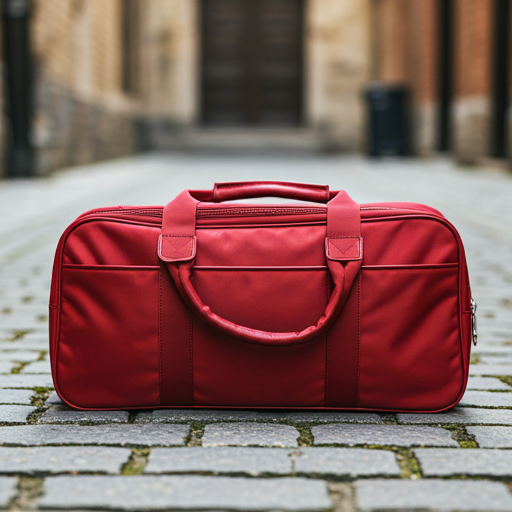
What is a Carry-On Bag?
A carry on laptop bag is your travel companion that stays with you throughout your flight, stowed either in the overhead bin or under the seat in front of you. Unlike checked bags, carry-on bags are designed to be compact and fit within the limited space available on an airplane. This makes them ideal for keeping your essentials close at hand, whether it’s your laptop, a change of clothes, or important documents.
The size and weight limits for carry-on bags can vary by airline, but most carriers have similar restrictions. For example, the carry on luggage size for frontier airlines allows carry-on bags to be no larger than 24 inches tall, 16 inches wide, and 10 inches deep, with a maximum weight of 35 pounds per bag. These dimensions ensure that your bag can be easily stored in the overhead bin without causing inconvenience to other passengers.
When choosing a carry-on bag, it’s important to consider not just the size but also the weight. Overpacking can lead to your bag exceeding the weight limits, resulting in additional fees or the need to check your bag. By selecting a bag that meets the airline’s requirements and packing smartly, you can make the most of your carry-on allowance and enjoy a stress-free travel experience.
4o mini
How Airline Carry-On Restrictions Differ: A Global Snapshot
One of the biggest hurdles for travelers is the inconsistency in carry-on luggage requirements across airlines. Whether you’re flying with a low-cost carrier or a major international airline, size restrictions can vary significantly. In fact, some carriers have stricter guidelines than others, particularly when traveling internationally. For example, understanding the carry on luggage size for Frontier Airlines is essential, as it can differ from other airlines’ limits.
For instance, American airlines like Delta and United tend to allow carry-ons with a maximum dimension of 22 x 14 x 9 inches. However, when flying to or from Europe, you may encounter more stringent size limits, with carriers like Ryanair or EasyJet enforcing smaller bags. In these cases, the maximum carry-on size can dip to 21.6 x 15.7 x 7.8 inches, which is considerably more restrictive. Understanding these variations is key to preventing any last-minute surprises at the gate.
Additionally, budget airlines often prioritize efficient boarding and offloading, leading to smaller overhead compartments. In contrast, larger international airlines may offer slightly more room for your carry-on luggage. Knowing these global differences before you pack, especially the carry on luggage size for frontier airlines, will help you avoid the potential for having to check in your bag at the last moment.
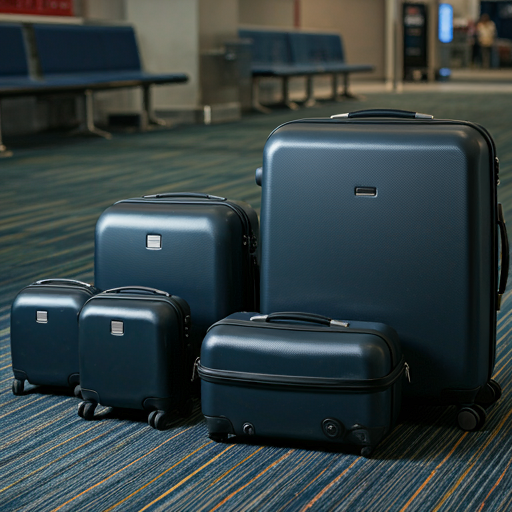
Standard Carry-On Sizes Across Airlines
While the size restrictions differ between airlines, there are still standard measurements that most carriers abide by. The most commonly accepted carry-on size is 22 inches tall, 14 inches wide, and 9 inches deep. This size is suitable for the majority of airlines, including the carry on luggage size for Frontier Airlines, which follows similar dimensions for its standard carry-ons.
But there’s more to consider than just the bag’s dimensions. In many cases, airlines also allow a personal item, which could be a backpack, a small suitcase, a diaper bag, or a tote bag, in addition to your main carry-on. This allowance often provides extra space for storing your essentials without violating the baggage guidelines. Be mindful of how your personal item fits into the overall carry-on allowance—this item must fit under the seat in front of you and not disrupt the cabin’s comfort or safety.
The Importance of Meeting Airline Size Limits
The most obvious reason for adhering to carry-on size restrictions is to avoid expensive fees for oversized luggage. Airlines, including the carry on luggage size for Frontier Airlines, are notorious for charging hefty fees when bags exceed the allowed dimensions, and this can add up quickly, especially with two bags, for families or frequent travelers. But beyond the cost, there’s the practicality of having your bag travel with you rather than being checked into the cargo hold, which may lead to delays or even lost luggage.
Adhering to size limits, such as the carry on luggage size for Frontier Airlines, also enhances the convenience of your trip. When your bag is the right size, it’s easy to store in the overhead compartment or under the seat, leaving you with more space and reducing the risk of delays. Furthermore, checking your carry-on bag at the airport boarding gate, can often lead to inconvenience, especially if your gate-checked bag ends up being lost or delayed at the destination.
Measuring Your Carry-On Luggage: A Step-by-Step Guide
To ensure that your carry-on meets the airline’s size restrictions, it’s essential to measure it properly. Here’s a quick guide to measuring your luggage:
Lay the bag on a flat surface: For the most accurate measurements, start by laying your carry-on bag flat on the floor.
Measure the height: Using a tape measure, measure the height of the bag from the ground to the top of the handle when fully extended. Most airlines will measure the bag this way, including any wheels or handles in the final size.
Measure the width: Measure the bag from side to side, including any external pockets or compartments that may extend out. Some airlines allow a bit of extra room for these features, but it’s safer to stick to the maximum width dimensions.
Measure the depth: Measure from the front of the bag to the back, which includes any protruding zippers or compartments.
Once you have the measurements, compare them with the airline’s carry-on size restrictions to ensure your bag complies.
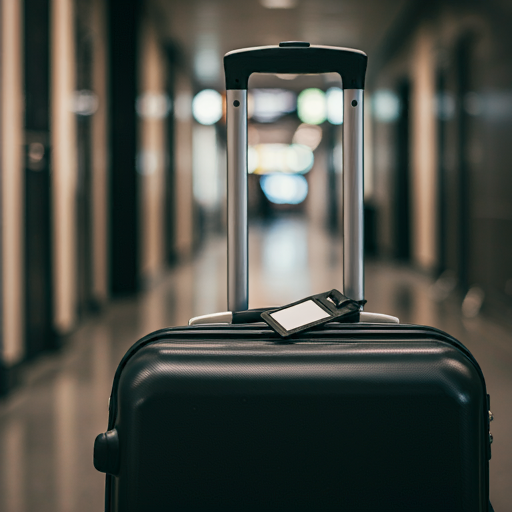
How to Know if Your Bag Fits the Airline Requirements
Some bags may appear to be within the size limits at first glance, but their true dimensions may exceed the allowed space when the wheels and handles are taken into account. To confirm that your bag meets the carry on luggage size for Frontier Airlines, it’s best to check the airline’s website for specific guidelines. Many carriers offer detailed charts or visual guides to help travelers determine whether their carry-on will fit.
Travelers can purchase luggage at the ticket counter, highlighting its role in the overall check-in and baggage process at the airport.
In some airports, you’ll also find sizing templates—rigid boxes or metal frames shaped to match the maximum carry-on dimensions of various airlines, including the carry on luggage size for Frontier Airlines. These can be found at the check-in area or near the security gate. Simply place your bag inside the template to see if it fits.
Weight Limits for Carry-On Luggage: What You Need to Know
In addition to size limitations, most airlines, including the carry on luggage size for Frontier Airlines, also impose weight restrictions for carry-on luggage. While these limits tend to be less strict than size restrictions, exceeding the weight limit could still result in added fees or the requirement to check your bag.
For carry on luggage size for Frontier Airlines, the typical weight limit is between 15 and 22 pounds, although some airlines are more lenient. British Airways, for instance, allows carry-ons up to 51 pounds, while Ryanair has a much stricter limit of 17 pounds per direction. To avoid surprises, check the weight restrictions of your airline and use a luggage scale before you travel to ensure that your bag meets the required weight.
How to Choose the Right Carry-On Size for Different Airlines
Selecting the right carry-on size depends largely on the airline you’re flying with. If you frequently travel with low-cost carriers, consider opting for a smaller, more compact bag to ensure that it fits within the carry on luggage size for Frontier Airlines and other similar airlines’ stricter limits. For major international airlines, you may have more flexibility, but it’s still important to choose a bag that provides easy access to your belongings while adhering to their guidelines.
Another consideration is the length of your trip. If you’re traveling for a few days, a smaller carry-on may suffice, but for longer trips, you may want a bag with a bit more capacity. The key is to balance practicality with the carry on luggage size for Frontier Airlines, ensuring that you can pack everything you need while keeping the size manageable.
Top Airlines with the Most Common Carry-On Restrictions
Some airlines are notorious for their strict carry-on restrictions. Airlines like Ryanair, EasyJet, and Spirit often impose smaller carry-on size limits, forcing travelers to be especially mindful when choosing their luggage. In contrast, major U.S. airlines like American Airlines, Delta, and United tend to have more generous carry-on allowances. However, even these larger carriers sometimes enforce stricter rules for international flights, so always double-check your specific route. For example, the carry on luggage size for Frontier Airlines is typically smaller compared to other U.S. carriers, requiring careful consideration when packing.
Checking the Airline Website: How to Find the Latest Information
Airline carry-on regulations are subject to change, so it’s important to consult the airline’s website or mobile app before your trip. Many airlines provide real-time updates on their luggage policies, including size and weight limits, and they often have detailed FAQ sections to help you navigate the baggage guidelines. For example check in on web here, it’s essential to check the carry-on luggage size for Frontier Airlines before you pack to avoid surprises.
By confirming the size requirements early, you can avoid last-minute packing decisions that could result in a miscalculation. Furthermore, checking the airline’s site helps you stay informed of any new fees or baggage allowances that may apply.
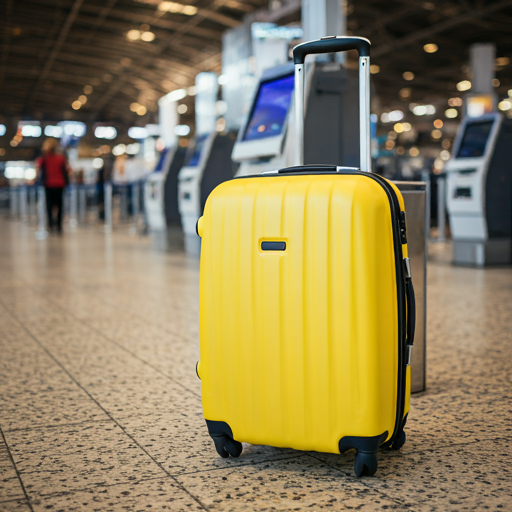
Budget Airlines vs. Full-Service Airlines: What’s the Difference?
The major difference between budget airlines and full-service airlines lies in their baggage policies. Budget airlines, as the name suggests, tend to operate on a pay-per-service model, meaning that even your carry-on bag could be subject to an additional fee if it exceeds the allowed dimensions, such as the carry-on luggage size for Frontier Airlines. Frontier bag fees highlight the limitations and options available for carry-on and checked luggage, with only a small personal item allowed for free. Strategies for avoiding or reducing these fees include obtaining elite status or using specific credit cards that can help waive costs. Full-service airlines, on the other hand, typically include a carry-on baggage allowance as part of your ticket, though they may also have stricter policies for heavier luggage. Knowing the difference can help you plan your packing strategy and avoid unexpected fees when flying with low-cost carriers.
Smart Packing Tips for Maximizing Your Carry-On Space
Packing efficiently is essential for ensuring your carry-on bag fits within the airline’s size and weight limits. To make the most of your carry-on space, roll your clothes rather than folding them. This not only saves space but also helps minimize wrinkles. Consider using packing cubes to keep your belongings organized and compact. And remember to pack only the essentials—avoid overpacking to leave room for any items you may pick up during your trip.
Common Mistakes to Avoid When Packing Your Carry-On
One of the most common packing mistakes is overstuffing your carry-on. Not only does this make it harder to fit into the overhead compartment or under the seat, but it also puts your belongings at risk of getting damaged. Another mistake is not double-checking the airline’s size and weight restrictions, including the carry on luggage size for frontier airlines, which can result in fees or delays. Lastly, forgetting to leave space for liquids or prohibited items can lead to frustrating delays during security checks.
When to Consider a Personal Item: Adding Flexibility to Your Packing
When airlines allow both a carry-on bag and a personal item, it’s wise to maximize both allowances. A personal item, such as a backpack or small duffel bag, can give you extra room for your essential or personal items—think electronics, documents, or medications. By carefully choosing your personal item, you can keep your most important belongings accessible without worrying about your carry-on bag exceeding the size or weight limits, such as the carry on luggage size for frontier airlines.
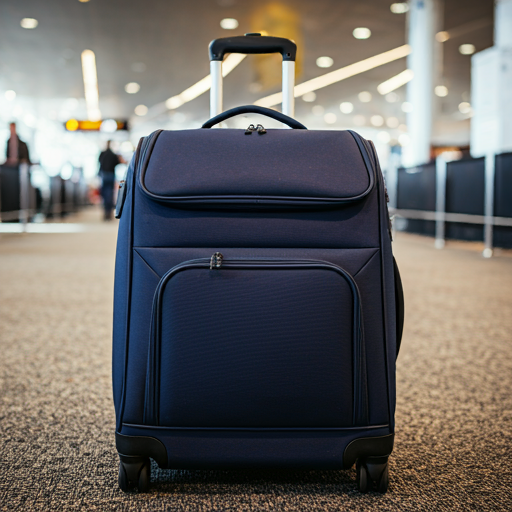
When a Larger Carry-On Fits (and How to Get Away with It!)
In some rare instances, you may be able to get away with a slightly larger carry-on. If the overhead bins are relatively empty or if you’re traveling on a flight with a less stringent enforcement policy, you may have more leeway in terms of size. However, it’s always best to err on the side of caution and opt for a bag that adheres to the airline’s requirements, including the carry on luggage size for frontier airlines. If you do decide to take a chance, be prepared for the possibility of needing to check your bag.
Tips for Avoiding Fees: Navigating Overweight and Oversized Carry-Ons
The key to avoiding extra fees is preparation. Before heading to the airport, make sure your carry-on bag meets both the size and weight requirements. Use a luggage scale to ensure you’re within the allowed weight limit, and check the bag’s dimensions with a measuring tape. If your bag is slightly over the limit, consider repacking or shifting items to your personal item to balance the load.
With these tips, you can travel confidently knowing your carry-on meets the airline’s regulations, including the carry-on luggage size for Frontier Airlines, allowing you to enjoy your journey without any added stress.
Using Credit Cards and Elite Status to Waive Fees
Baggage fees can quickly add up, but there are ways to avoid them by leveraging credit card benefits and elite status with airlines. Many travel credit cards, such as the Chase Sapphire Reserve or the American Express Platinum Card, offer annual travel credits that can be used to cover baggage fees, among other travel expenses. These credits can be a lifesaver, especially if you travel frequently.
Additionally, having elite status with an airline can also help you avoid baggage fees. For example, Frontier Airlines’ elite status members can bring a carry-on bag for free, and family members and top-tier members can even bring a checked bag for free. This perk can save you a significant amount of money, particularly on longer trips where you might need to bring more luggage.
To take advantage of these benefits, make sure to use a credit card that offers travel credits when booking your flights and check if your elite status includes baggage fee waivers. By doing so, you can travel more economically and avoid the stress of unexpected fees at the airport.
Conclusion: Recap of Key Points
In conclusion, understanding airline baggage policies is essential to avoid unexpected fees and ensure a smooth travel experience. Carry-on bags are subject to size and weight limits, and fees can vary depending on the airline and the type of fare. Using credit cards and elite status can help waive baggage fees, but it’s essential to review the airline’s policy carefully to make informed decisions about your luggage. By packing smart and understanding the airline’s baggage policy, you can save money and enjoy a hassle-free flight.
Remember, preparation is key. Check the airline’s website or mobile app for the latest information on baggage policies, use a luggage scale to ensure your bag meets the weight limits, and consider using packing cubes oversize bags to maximize your carry-on space. With these tips, you can travel confidently, knowing your carry-on meets the airline’s regulations, including the carry-on luggage size for Frontier Airlines, allowing you to enjoy your journey without any added stress.
